WE ARE ALL UNIQUE AND DIFFERENT AND ONE OF A KIND AND HAVE OUR OWN PERSONAL VIEWPOINT. …JUST LIKE EVERYONE ELSE.
If I do this correctly, by the time you finish writing this manuscript, you’re going to be a lot better than you are right now. Most of the credit for that will belong to you. To repeat, write a lot and you’ve got to get better. But some of the credit, I hope, will accrue to me too, because as we keep going along, I hope to provide tips, instruction, pointers, things to think about and all of them together are going to make you a better novelist.
I wish somehow I could give them to you all at once, by putting my hand on your noggin. But that’s a Mr. Spock Vulcan Mind Meld and I don’t know how to do it, so I’ve got to lay this stuff out a piece at a time. Which is, after all, the way I learned it too.
* * *
Okay. First things first. Remember those notebooks I made you carry? I hope you’re still carrying them and using them. Painters, artists carry sketch pads, sometimes even cameras, to freeze a scene for use later. These notebooks are your sketch pads.
“The phrase, ‘I’ll never forget that,’ is the devil whispering to you.” If you don’t write it down — whatever “it” was — you’ll forget it inside of 15 minutes. That advice about the whispering devil, by the way, comes from Richard Bach who wrote Jonathan Livingston Seagull.
He gives good advice but he also, by his life, gives good inspiration. His international classic bestseller, Seagull, was rejected twenty times before it was published. Another brilliant judgment by 20 “Legacy” publishing editing morons.
But publishing morons never die of loneliness. Other books that got rejected along the way, before finally worming their way into print, included War and Peace, Watership Down, The Postman Always Rings Twice, The Tale of Peter Rabbit, Peyton Place, The Fountainhead, To Kill a Mockingbird, Joy of Cooking, Confederacy of Dunces. Oh, and James Joyce’s, The Dubliners, was rejected by 22 publishers.
Do you wonder, with so much stupidity rampant in the “Legacy” books business, that so many people are now self-publishing? And who knows what the future holds?
From time to time, I may tell you other tales of stupidity, craven cowardice, even insanity on the part of the mainstream publishing gang. This is not to terrify you or to make you stop writing, but simply to let you understand that, if possible, traditional publishers are collectively dumber than a box of walnuts. John Gardner, the great novelist and teacher, once said of editors: “One should fight like the devil the temptation to think well of editors. They are all, without exception — at least some of the time — incompetent or crazy….It is useful for young writers always to think of editors as limited people, though if possible one should treat them politely.”
One nice thing about this brave new world is that we need these mopes less and less than we used to.
* * *
Okay, back to writing.
On a sticky tab or an address label or something, write down these words: “Sight. Sound. Smell. Taste. Touch.”
Now attach that to your word processor or keyboard or the wall by your desk or your windows, so you can see those words when you write, because this is going to help your writing come alive. Don’t forget that a sharp-edged line of description can often tell more about a scene than a couple of pages of dripping, oozing, writerly writing. Twenty years ago, I read a piece where Tom Wolfe described the the skyline of Las Vegas as being made up of signs and billboards. That was exactly right and what’s a butt-kick is that I had flown into Las Vegas 25 times and never noticed. You can’t win them all.
Anyway, we mentioned earlier about not necessarily writing of what you know, but writing what you can think, and figure out and sense and imagine and invent.
Let’s both try it here as we consider using the senses in our writing. Imagine you’ve walked into a morgue, a busy big-city morgue. It doesn’t matter if you’ve ever been in one or not; if you’re a fussbudget, read about one…or remember one you saw in a movie or on TV but don’t waste a lot of time. This is an exercise. Now write about that morgue through the five senses you’ve just pasted on the wall…sight, sound, smell, taste and touch.
What do you see, what does it look like? Overwhelming impression is of bright lights, as glaring as a night baseball game. Everything glares in this room.
Sound: You hear the sound of electric saws, like a shop class in high school. God, what are they doing here with those saws? These are humans, not coffee tables.
Smell: The pervading smell in here is cold, dead, like partially thawed pork chops. But someone’s wearing perfume. Maybe a live worker. Good God, maybe not.
Taste: Sip the air through your mouth. It’s cold; it seems almost wet and suddenly you clamp your mouth shut because you’re uncomfortable taking that taste in through your mouth. Through your nose is bad enough.
Touch: Everything is spotless stainless steel. To touch any of it would leave fingerprints and you’d feel guilty about that because it’s all so clean and shiny…except for the greasy slimy rivulets of thickish purpling blood that run down the edges of dismembering tables into pink plastic collection buckets.
Now that’s not great but it’s probably serviceable and it’s on the fly and meant to show you how writers can personalize and intensify their writing by using their five senses. (I often use a sixth: nonsense. “The head medical examiner smiled at me and waved a greeting with the bloody chainsaw he was holding. He was a short man, wearing a hideous sunflower-colored wig which somehow he had managed to put on backwards. And he was missing a front tooth.”
The point is don’t always just say what something looked like. Use the other senses too; sometimes it is just as distinctive to write that a serial killer tracking a potential victim keeps humming “The Flight of the Bumblebee” as it is to give that killer’s weight and height.
* * *
As you may have guessed, I made up this visit to a morgue. I’ve never been in a morgue and probably won’t be for another two or three months anyway. If I were doing a book about one, I’d probably do some little bit of research. But for an example, I can sort of guess what such places look like and, besides, I know what it says on the door outside the New York medical examiner’s office: “Let conversation cease. Let laughter flee. This is the place where death delights to help the living.” To me, those words have always been more chilling than anything that happens inside.
* * *
And now a word on writing style.
Each of us along the way is going to develop his own style. It’ll come out of your feel for language, out of how much you’ve got packed in your brain; it’ll come out of your sense of humor and your perceptiveness. And it will be your style and no one else’s.
Don’t go looking for it. It will eventually find you.
Mary Clark has a style, Dean Koontz, Stephen King, Molly Cochran, Andrew Klavan, Larry Block, Susan Isaacs, Harlan Coben, Sue Grafton…they all have styles. I am told I have a style too, although I don’t know what it is and I’d hate to have to try to imitate me. (However, my late partner Dick Sapir mimed me with vicious savagery. I often returned the favor.)
Among the classics, Hemingway was one thing and Dickens another and Melville and Dreiser and James M. Cain…all had styles as individual as fingerprints.
SIDEBAR: Ernest Hemingway is massively underrated in these unkindly days of literary deconstruction but he was a major force, after Mark Twain, in getting us away from the purple prose that was the curse of lit years ago and which I hope you will not succumb to. Papa basically showed it’s not how many words you use, but instead how often you use just the right words.
There is a story that in a Paris bistro one night, Hemingway challenged some other writers to write the shortest emotionally-charged fiction piece that they could.
Hemingway won the contest. His winning story was six words long. It read:
For Sale.
Baby shoes.
Never used.
As I say, your style will find you; don’t worry about it. Just keep using the right words and your style will invent itself.
* * *
In writing a genre book, which you’re doing now, content and clarity is perhaps more important than individual style. Later, as you “move on up to the East Side” to do bigger, more mainstream books, style will be a bigger factor.
But since there’s no time like the present, here is what is pretty much a template for how novels are written today. and there is no reason that you don’t, even now, try to incorporate these writing suggestions into your work. You don’t have to be slavishly devoted to them but try giving them a shot; they can make your work better, and later on, as you take on harder work, they may help even more.
The modern novel generally depends on:
- Scene by scene construction. It’s not one long narrative that never ends. Not usually, not any more. Instead, the story stops, starts again somewhere else, stops, starts again. These scenes are like chapter breaks, except more frequent.
- Dialogue that sounds real. This is not tape-recorded dialogue but an attempt to make speech sound more realistic than it often has been written. Sometimes people say things that aren’t exactly to the point; nothing wrong with that as long as it’s interesting and/or entertaining and can move the story forward. Cases in point: the overrated Quentin Tarantino in films like “Pulp Fiction.” One of the best at it was novelist George Higgins. Elmore Leonard is excellent; also Larry Block.
- Status objects. An essay by Tom Wolfe (Bonfire of the Vanities) put this in my head some years ago. A certain kind of person wants to wear shirts that have little alligators on them and another totally different type of person perhaps wants to have a statue of a black jockey on his lawn…or a pink flamingo. My late loving mother, a paragon of taste, once moved into our guest house and put painted plywood cutouts of the backviews of two people, bending over as if planting something in the yard. Naturally, butt cracks were visible because they were the whole point of this architectural and horticultural display. Since my house then was a mansion and a national historic site, I suggested that my mother take her plywood cutouts off the front lawn and put them in her backyard where nobody could see them but her. (I am a long time out of Alabama.)
Those things are all status objects. Here’s another: a guy rents a room in a sleazy hotel; it is a hovel in a dump. The floor of the room is littered with racing forms. Those are status objects and tell you something about the occupant. Or maybe the newspapers are neatly stacked against the wall and, instead of the racing form, they are copies of the Wall Street Journal with many stories circled by magic marker. Those are also status objects but should give you quite a different picture of the room’s occupant. Tattoos today are status objects; so too is a lack of tattoos. They illuminate character sometimes. And just as often an absence of intelligence. - Finally, a large percentage of novels today are written in restricted third person viewpoint. In other words, in each individual scene, the author works through only one person’s head. Anybody else in the scene, except the major player at that moment, is made to live by his actions and his words, but not by you — as author — getting into his head and telling us what he’s thinking. (Obviously, by the way, private eye novels are in some way illustrative of this rule because most PI’s are written first person since it’s impossible to get into another character’s thoughts and feelings except by showing him cavorting on your literary stage.)
* * *
More next time. Wash your face.




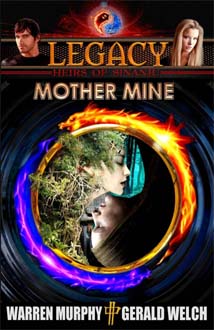
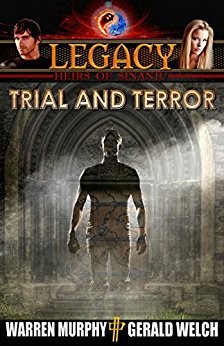
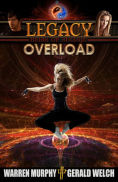

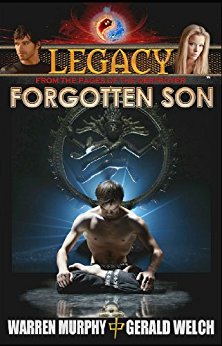
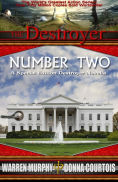
It’s funny you should use a morgue as your example, Warren. I’m reading the latest Pendergast book, Two Graves, by Lincoln and Child. They have a morgue scene in the book which has a very good description of D’Agosta’s feeling about entering the building, and a mention, with translation, of the inscription above the door.
I’ve been lucky with editors. None of them have matched John Gardner’s description.
That’s a great bit about the five senses. But I wonder when it’s too much. Working in criminal justice the past 20 years, I’m always afraid my narrative will end up reading like a police report, with too much detail, delivered too dry. How much detail does a reader really need?